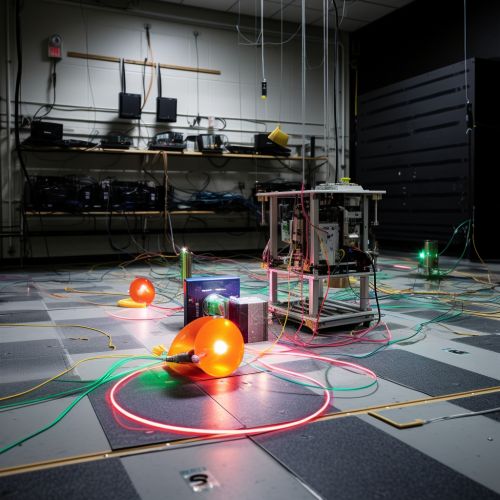EPR Paradox
Introduction
The EPR paradox is a thought experiment proposed by physicists Albert Einstein, Boris Podolsky, and Nathan Rosen (EPR) that challenges the quantum mechanical theory. The paradox illustrates an apparent conflict between the principles of locality and realism, and the predictions of quantum mechanics.


Background
The EPR paradox was first published in a 1935 paper titled "Can Quantum-Mechanical Description of Physical Reality Be Considered Complete?" The authors, Einstein, Podolsky, and Rosen, aimed to demonstrate that the wave function in quantum mechanics does not provide a complete description of physical reality.
Quantum Mechanics and the EPR Paradox
Quantum mechanics is a fundamental theory in physics that describes nature at the smallest scales of energy levels of atoms and subatomic particles. The EPR paradox is a significant aspect of the interpretation of quantum mechanics. It is based on the concept of quantum entanglement, a physical phenomenon that occurs when a pair or group of particles interact in ways such that the quantum state of each particle cannot be described independently of the state of the others.
Locality and Realism
The EPR paradox is fundamentally a debate about the principles of locality and realism. Locality refers to the idea that an object is only directly influenced by its immediate surroundings. Realism, in the context of the EPR paradox, refers to the belief that an object has definite properties whether or not it is being observed.
Bell's Theorem
Bell's theorem is a significant development in the discussion of the EPR paradox. Proposed by physicist John Bell in 1964, the theorem provides an upper limit to the correlation that can be observed between the measurements of two entangled particles, assuming that the principle of locality is valid. The predictions of quantum mechanics, however, exceed this limit, implying that either the principle of locality or realism, or both, must be abandoned.
Experimental Tests of the EPR Paradox
Numerous experimental tests of the EPR paradox have been conducted, most notably the Bell test experiments. These experiments have consistently supported the predictions of quantum mechanics, suggesting that the universe does not adhere to both the principle of locality and realism.
Implications and Interpretations
The EPR paradox has profound implications for our understanding of the physical world and the interpretation of quantum mechanics. It has led to the development of various interpretations of quantum mechanics, such as the Copenhagen interpretation, the Many-Worlds interpretation, and the Bohmian mechanics.
